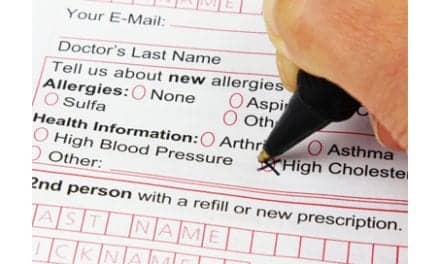Around the holidays, even the friendliest game of flag football can lead to injury. According to sports medicine physicians at Hospital for Special Surgery, New York, older and newly active recreational athletes are particularly at risk for shoulder injuries.
"The most common injuries are soft-tissue shoulder injuries such as tendinitis, labral tears, and torn rotator cuff," says Stephen Fealy, MD, an orthopedic surgeon in the Sports Medicine and Shoulder Service at Hospital for Special Surgery. Fealy, along with his colleagues, sees a spike in office visits the Monday after Thanksgiving each year. These recreational injuries are usually associated with repetitive overhead movements, such as throwing a basketball, making a pass in flag football, and swinging a tennis racket.
"Rotator cuff tears are more common in our 50s, when the tendons in our arm become more brittle," Fealy says. "If a recreational athlete in this age group experiences pain after overhead activity, I would suspect that a torn rotator cuff is at play."
Rotator cuff tears are less common among younger recreational athletes in their 30s and 40s, Fealy says. Instead, tendinitis and labral tears are the more likely culprits among weekend warriors in that age group. "Like a torn rotator cuff, tendinitis results from extensive use over a period of time. It causes pain, swelling and tenderness but doesn’t usually restrain everyday activities," Fealy says.
In middle-aged athletes, a torn shoulder labrum is typically associated with frequent participation in higher-energy overhead sports, such as volleyball and baseball.
Only a small number of soft tissue shoulder injuries require surgery. In general, nontraumatic shoulder injuries can be treated conservatively with physical therapy that is focused on stretching and strengthening.
Should recreational athletes experience shoulder pain and swelling, Fealy recommends asking the following questions to determine whether to seek medical assistance:
— If the shoulder is sore, can you still engage in normal movements? If so, it could be tendinitis that may not require medical assistance. A week of antiinflammatory medication such as ibuprofen could do the trick.
— If it is more difficult to move your arm, are you currently unable to perform an activity that you could do before? If so, you should seek medical attention. Your physician might recommend an MRI to diagnose tears and possible shoulder separations.
Nonsurgical treatment of tendinitis, rotator cuff, and labral tears typically consists of organized physical therapy, antiinflammatory medication, rest, and, in some cases, an in-office cortisone injection. Fealy offers the following recovery tips and advice to prevent further injury:
— For tendinitis and rotator cuff tears, conduct inhome or in-office physical therapy once or twice a week for a month. For labral tears, conduct in-office physical therapy for up to 2 months.
— Focus on regaining full range of motion.
— Do not baby your shoulder lest the whole shoulder system tighten.
— Return to play no more than once a week during recovery periods.
— Ice is the cheapest and most effective antiinflammatory. Apply ice twice a day for 20 minutes after any big game.
— Prevent future injury by instituting good ergonomic practices at your desk during the work week.
— Keep your shoulder relatively still at the office. Place your mouse beside your hand so that you don’t have to reach for it and potentially aggravate the shoulder.
— Break a sweat pregame. Take a short jog around the field to warm up your entire body.
— Practice yoga to develop core strength and flexibility. Fealy sees fewer breakdown injuries in people who practice yoga.
With proper nonsurgical treatment and rehabilitation, most athletes can expect to return to preinjury levels of play. More serious injuries of the labrum and rotator cuff could require surgery.
[Source: Hospital for Special Surgery]




